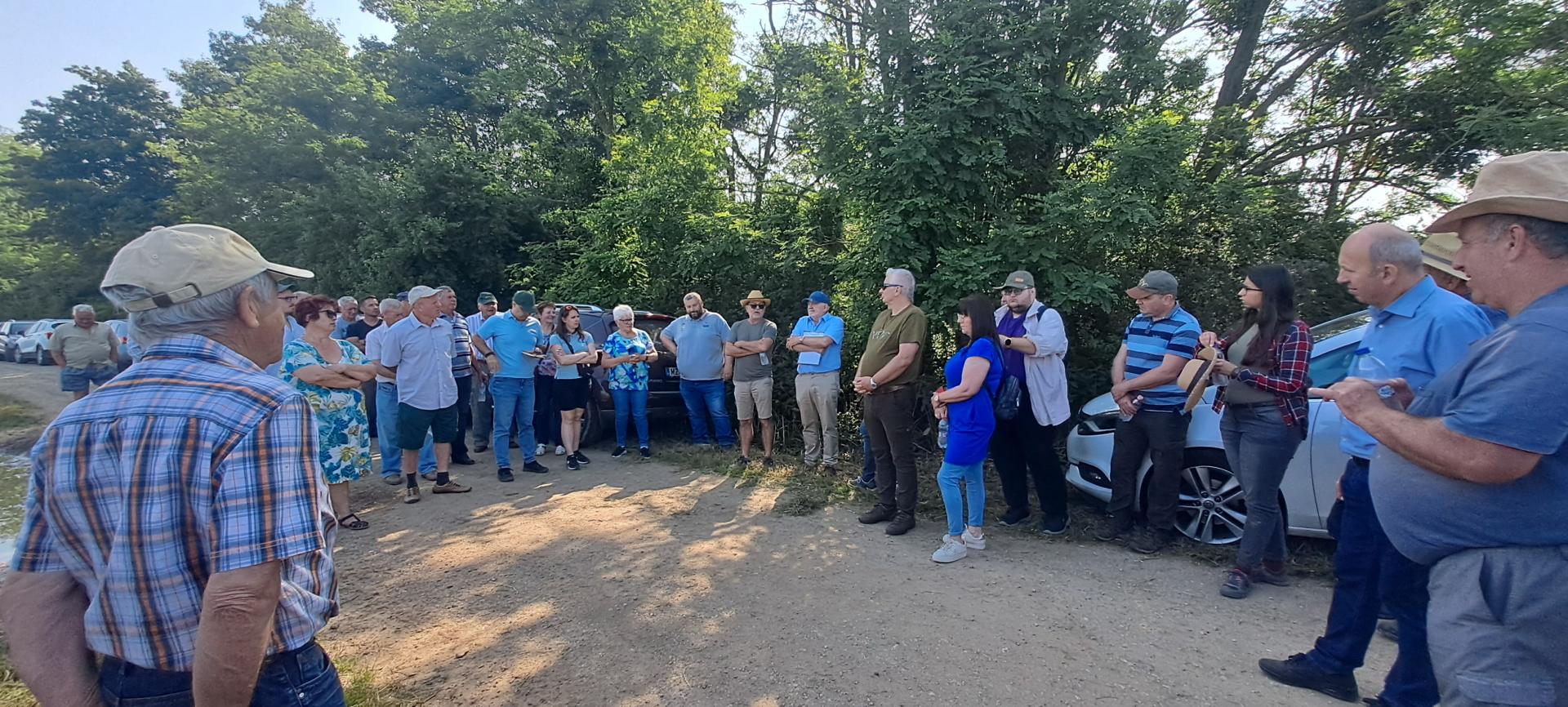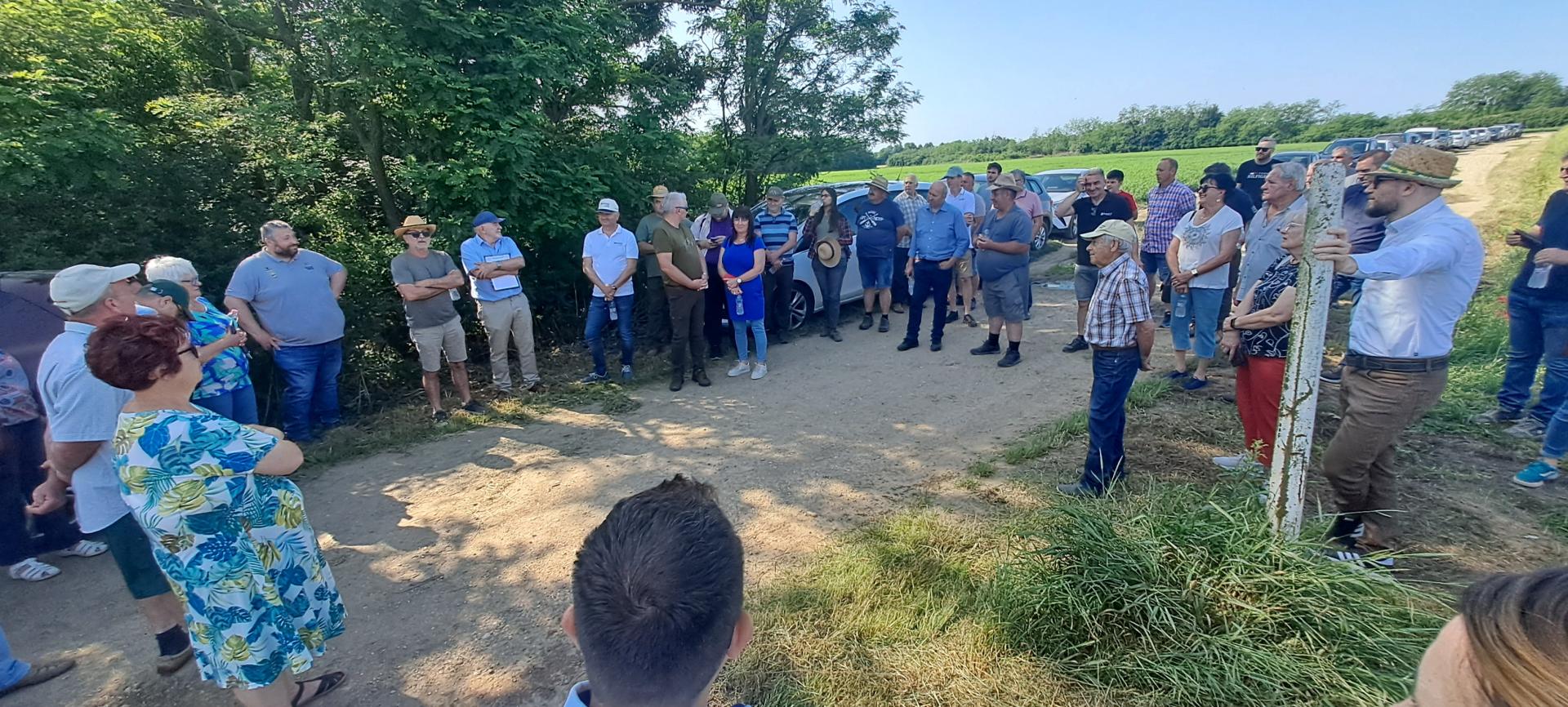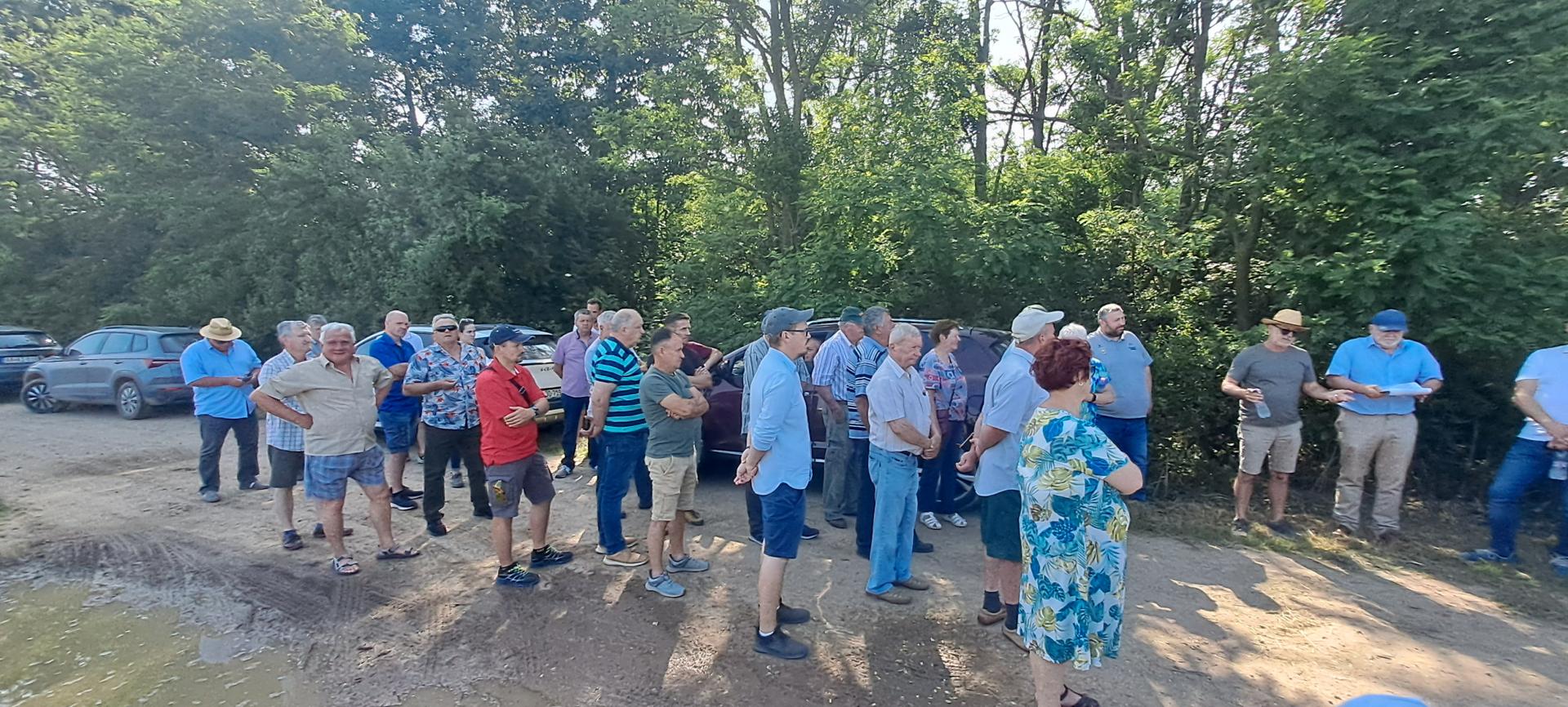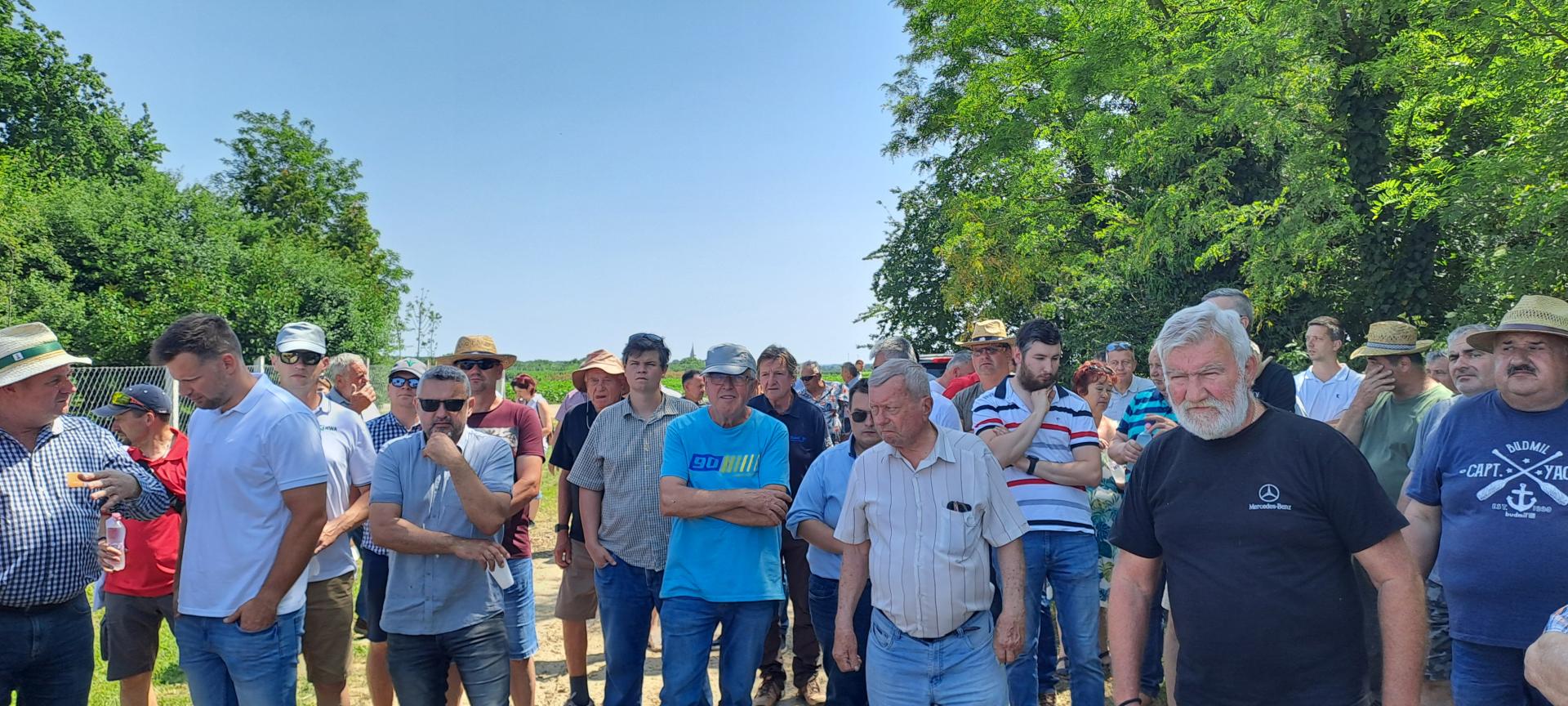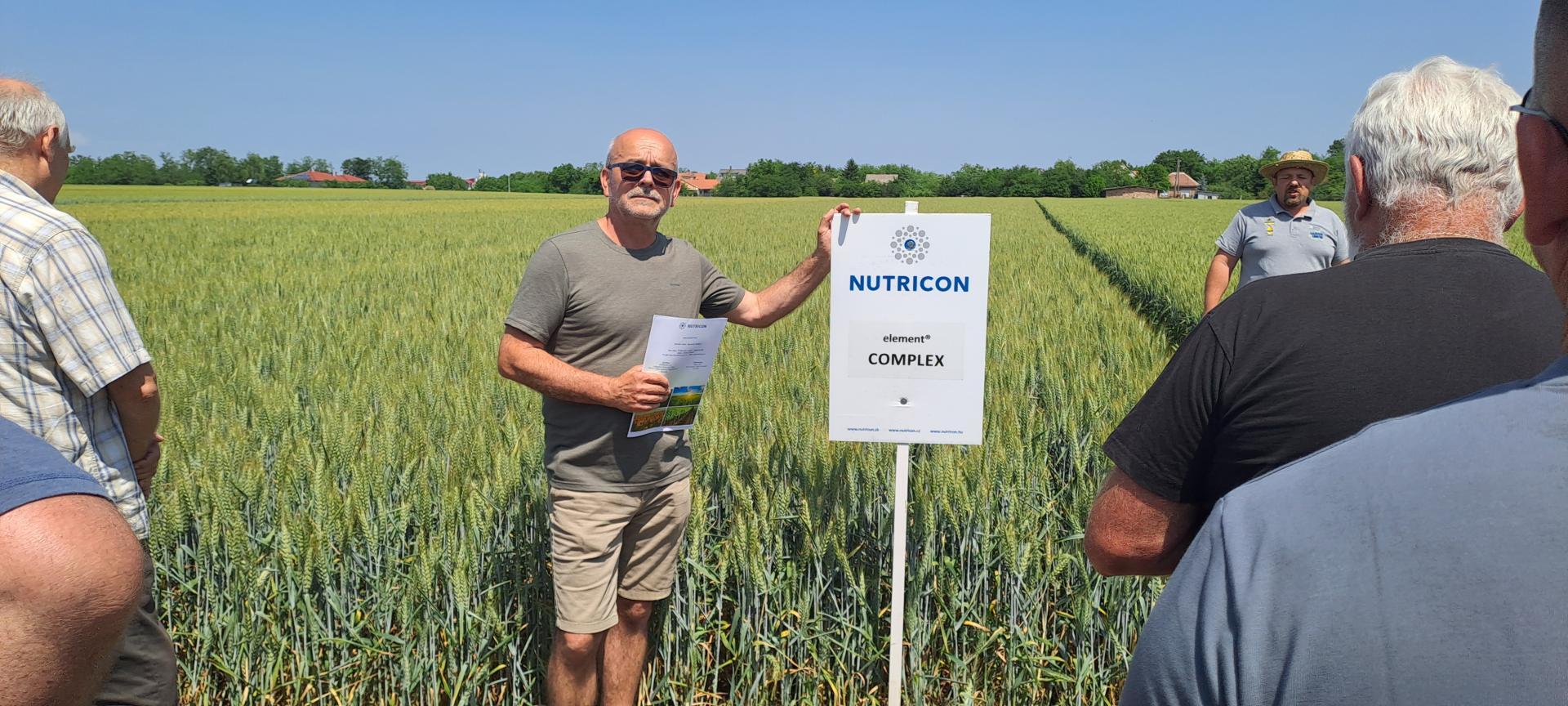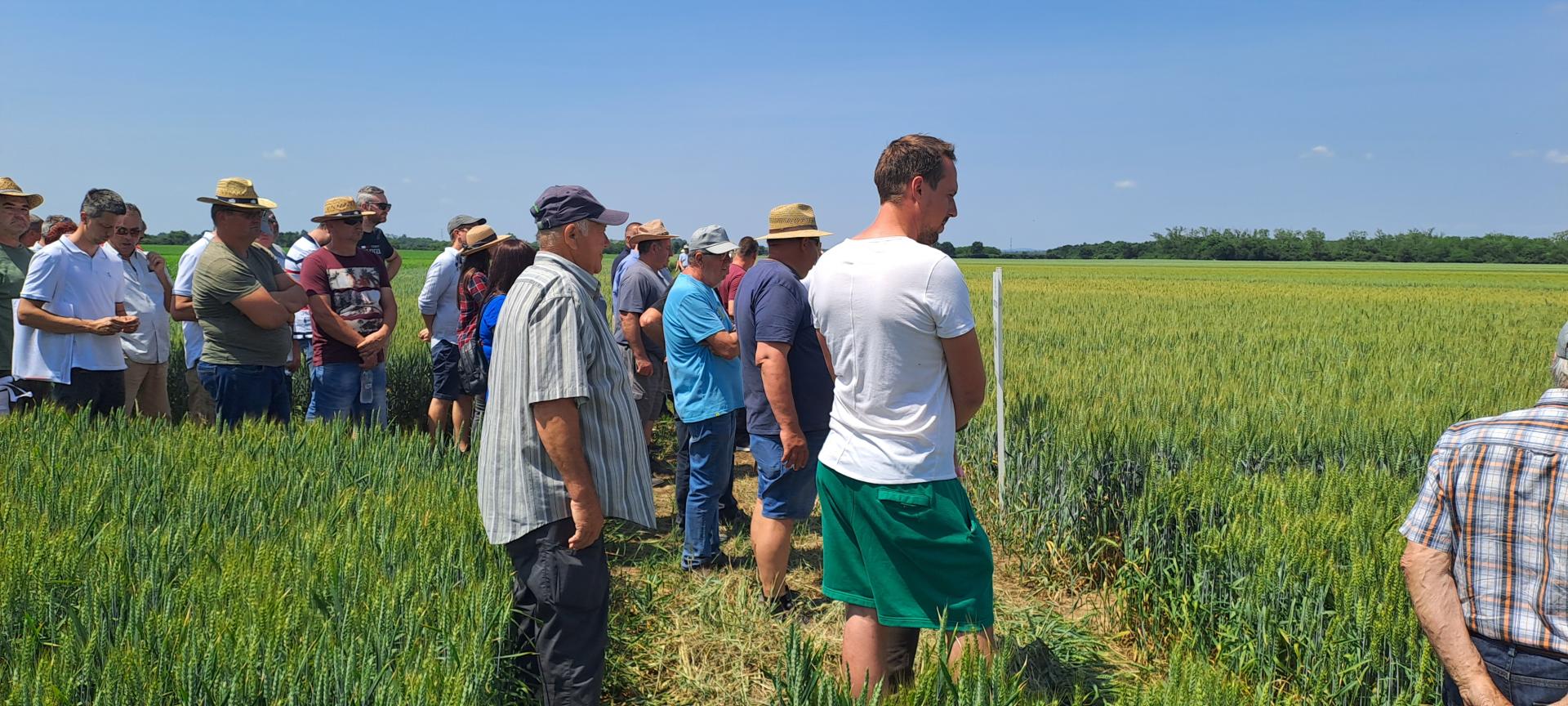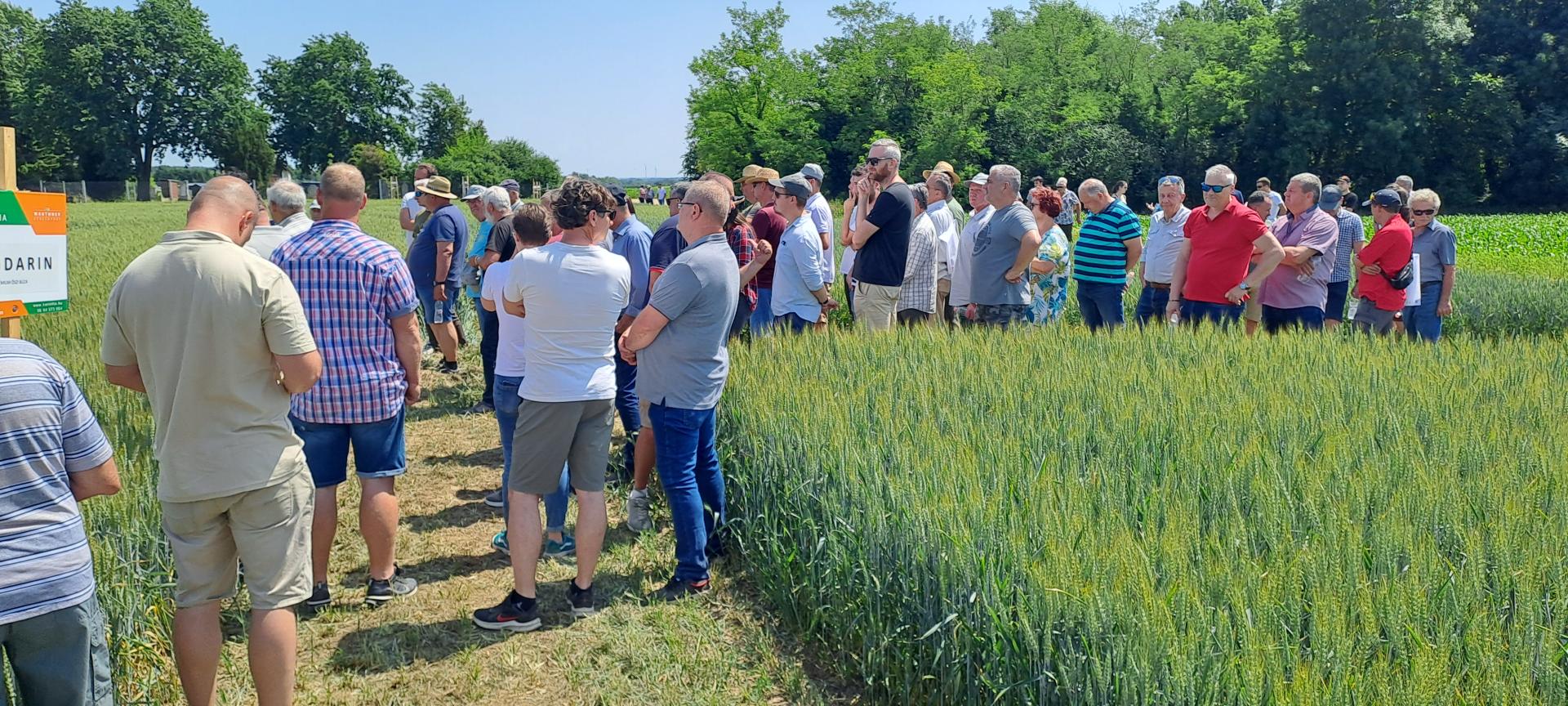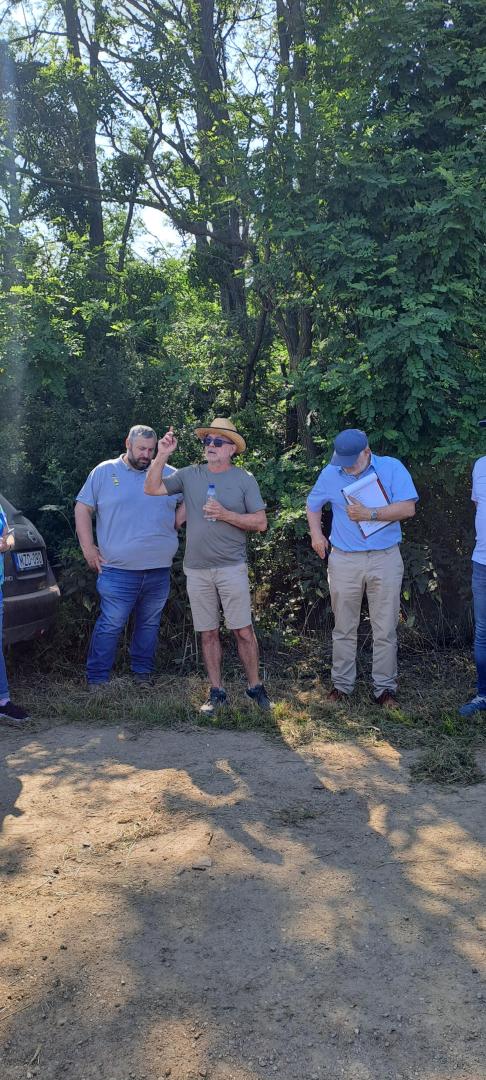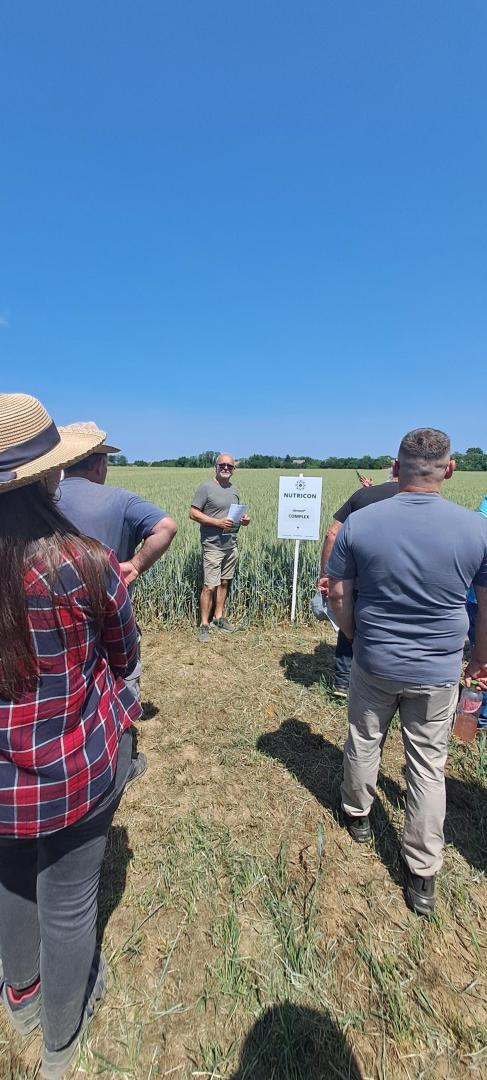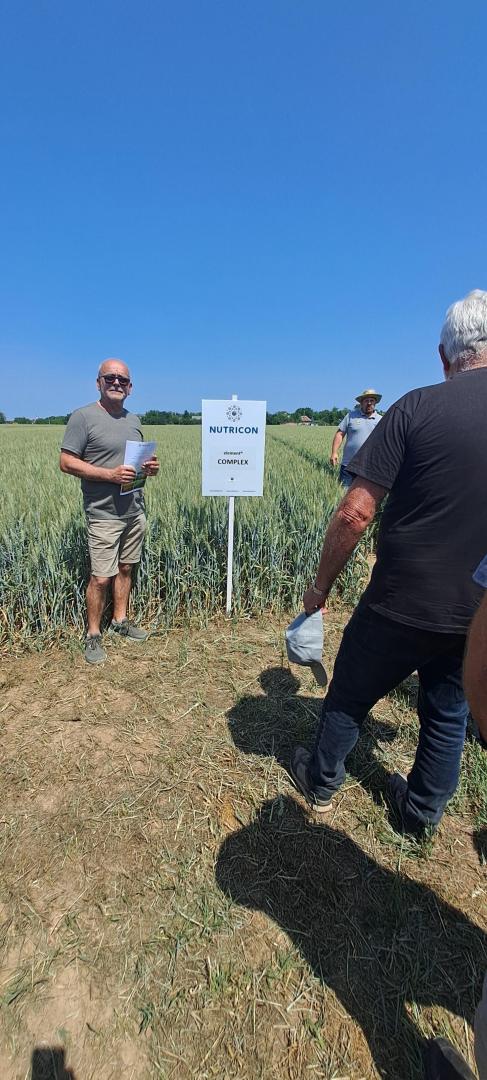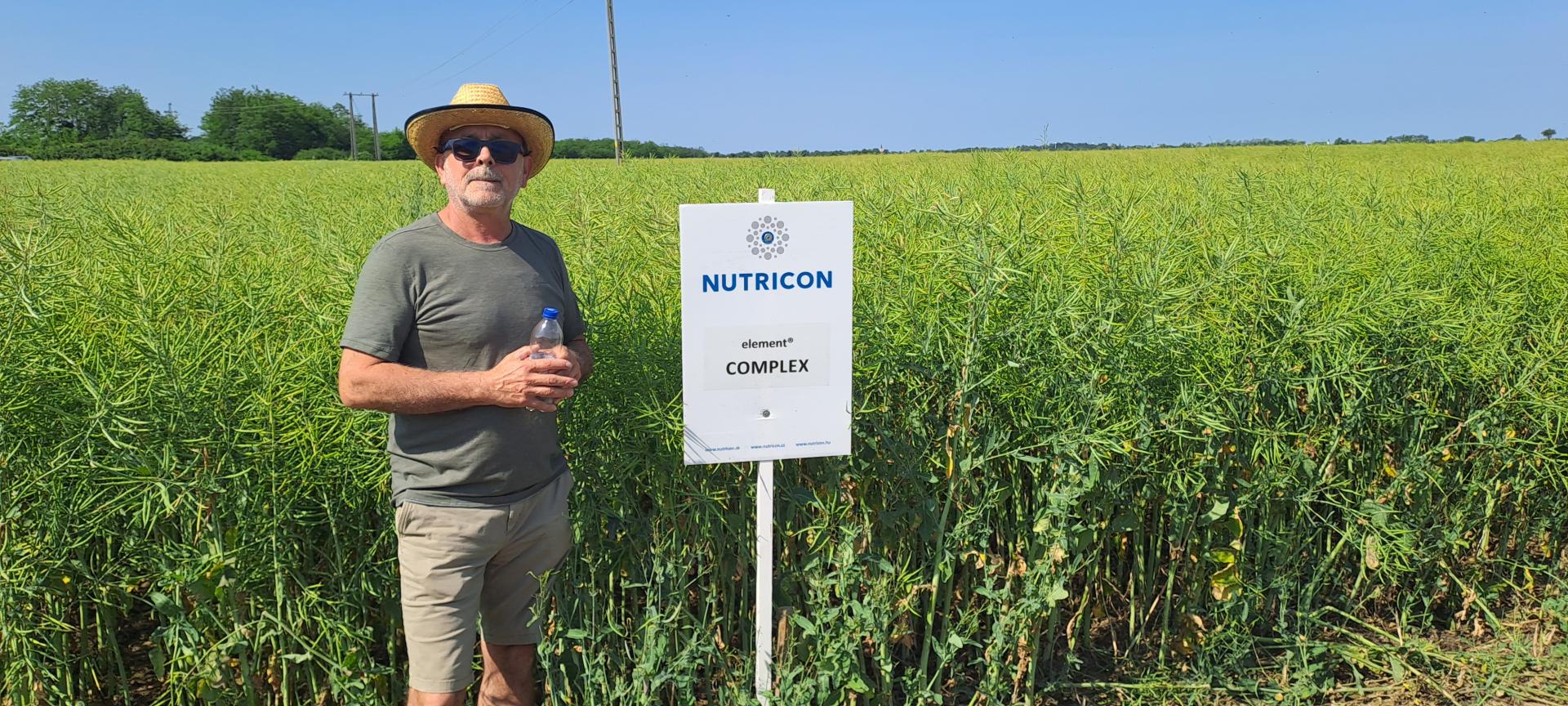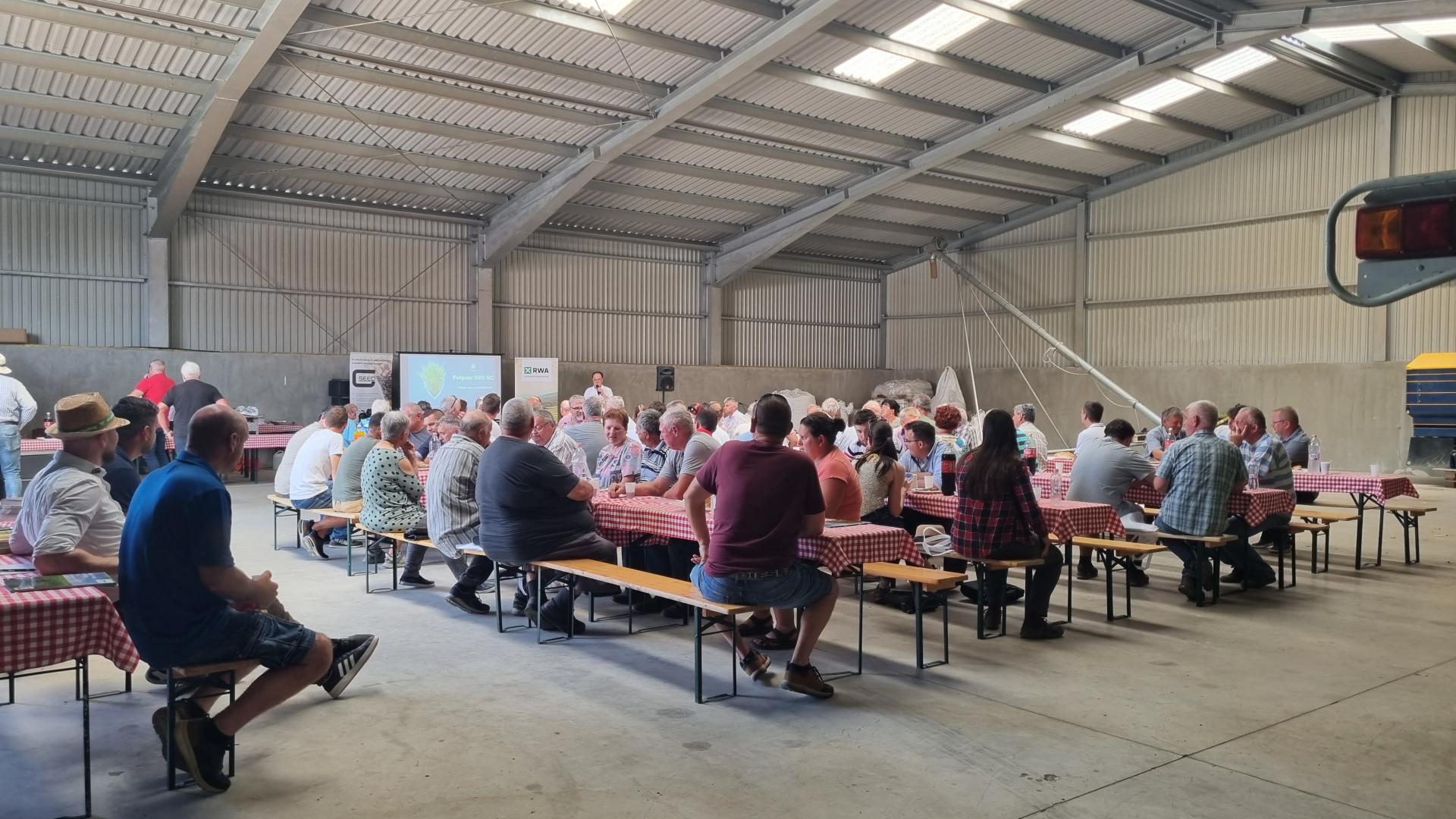This year’s rapeseed and wheat field demonstration was once again traditionally held at the Nagy Family Farm, organized in cooperation with seed variety owners and NUTRICON s.r.o., with the participation of nearly 120 farmers. Representing our company, Sales Director János Kiss gave a presentation to the audience about NUTRICON’s product portfolio and current topics in plant nutrition.
Expert Opinion: Hungarian Farmers Are Cutting Costs in the Wrong Place
“In arable crop production, it’s not the inputs that farmers should be cutting back on, but rather they should carefully consider what they are spending on,” said János Kiss, Sales Director of Nutricon s.r.o., a Hungarian-speaking Slovak company, during the rapeseed and wheat variety/hybrid field demonstration organized by RWA Magyarország Kft. The expert also explained why investing in premium liquid fertilizers is worthwhile, outlined their key characteristics, and emphasized the need for a change in mindset among farmers to ensure more efficient production.
A General Trend of Cost-Cutting in the Sector
According to Kiss, Nutricon specializes in nutrient supplementation — they develop and manufacture liquid fertilizers based on proprietary know-how and distribute them directly. In recent years, a clear trend of cost-cutting has emerged in the sector, driven by challenging economic conditions. However, Kiss warns that reducing fertilizer application negatively impacts yields and profitability. “This mindset is misguided,” he emphasized. “The right response to the challenges of arable farming isn’t to cut all inputs, but to rethink and optimize spending.”
What Makes a Liquid Fertilizer High-Quality?
Nutricon’s liquid fertilizers are high-concentration, phase-stable formulations that ensure premium-quality nutrient delivery, explained Kiss. A key feature of their products is the transparency in composition — the exact quantity of each nutrient and key microelement per liter is clearly stated. There are also visual indicators of quality: whether sediment is present, whether the liquid remains stable and clear, and whether it has a high enough concentration to require only a small application rate. The lower the required volume per hectare, the more concentrated — and thus more efficient — the product. Nutricon’s fertilizers typically require an average dosage of just 2 liters per hectare, offering a strong price-to-performance ratio.
Focus on Quality and Usability in Product Development
Kiss noted that Nutricon’s development strategy prioritizes both product quality and usability. The primary consideration is what the plants need — and equally, what the end-user (farmer) needs. He emphasized the importance of farmers gaining a deeper understanding of their soils and their nutrient requirements. “There is a massive micronutrient deficiency in most soils, which cannot be addressed by standard base fertilizers,” he said. “And when farmers reduce their applications, this imbalance only worsens. Moreover, in the absence of rain, base fertilizers are not even absorbed effectively. But crops still need nutrients — and that’s where concentrated, high-quality products come in.”
A Shrinking Customer Base and Oversupply Characterize the Market
Looking ahead, Kiss believes that optimism is essential in the input supply sector — even if the challenges are real. “Everyone is planning for growth in the next season, but the truth is: there’s no more arable land, and there are no more farmers. In fact, smaller operators are steadily exiting the system,” he observed. Meanwhile, the market is flooded with products across all categories — making it incredibly difficult for farmers to navigate. That’s why, he says, credibility and reliability are more important than ever. “I remain optimistic because I see that farmers are becoming more deliberate with their spending. In the end, it’s not about chasing higher yields at all costs — it’s about cost-effective, sustainable farming.”
New Crops Could Take Over Hungarian Fields: Are Traditional Varieties Becoming Obsolete?
RWA Magyarország Kft. recently hosted a joint field demonstration of rapeseed and wheat (both variety and hybrid types) in Bozzai, bringing together leading breeders active in Hungary and agricultural experts. As farming conditions continue to shift, the role of genetics and proper variety selection is becoming increasingly critical in cereal and rapeseed cultivation.
Representatives from Adama, Corteva Agriscience, Karintia Kft., KWS, the National Chamber of Agriculture, Nutricon s.r.o., Yara, RAGT Seeds, RAPOOL, and Saaten Union took part in the event. They showcased new breeding lines and varieties while discussing domestic and global market trends, with particular emphasis on resistance—or at least tolerance—to diseases and pests.
Márton Pusztavámi, President of NAK in Vas County, emphasized that farmers in the region achieve significantly higher yields than the national average—differences that translate into hundreds of thousands of forints. He clarified that this is not due to better rainfall, as the region actually suffers from very low precipitation levels. Rather, high yields are the result of intensive agrotechnology and strategic variety selection. He also noted that varieties which used to dominate for decades now last only three to four years due to rapidly evolving genetics.
“If we want to stay competitive, we need the best varieties,” he stressed.
Pusztavámi also pointed to the extreme drought that has persisted since October 2024. Aside from 173 mm of rain in September and some scattered showers in October, there’s been no substantial precipitation. Forecasts predict no significant rainfall in the near future either.
Rapeseed acreage in Vas County has plummeted from around 27,000 hectares to just 13,000 hectares in the last 3–4 years. Meanwhile, soybean cultivation continues to expand, now covering 17,300 hectares.
János Kiss, Sales Director at Nutricon s.r.o., explained that the company entered the Hungarian market three years ago. They specialize in nutrient supplementation, primarily producing high-concentration liquid fertilizers based on their proprietary R&D and formulations. Their products are typically applied at 1–2 liters per hectare and are tailored for specific crops, with high compatibility.
He warned that under current market and environmental conditions, producers must invest only in products with proven efficacy and avoid wasting resources on ineffective inputs. He highlighted the widespread issue of hard water in Hungary, which reduces pesticide efficacy and increases costs. Nutricon offers a dedicated solution to mitigate this problem.
Máté Cserági, Regional Manager for Western Hungary at RWA, said that while corn acreage is declining across the country, their market share is actually growing. The company continuously imports new genetics through its Austrian breeding program and maintains extensive breeding partnerships with top-tier firms. The goal is to deliver Hungary’s most cutting-edge genetic potential in crops like maize and winter cereals at competitive prices. For the current season, five new wheat varieties have been introduced.
Older varieties, he added, tend to “burn out”—they no longer deliver competitive yields and thus gradually fall out of production.
Cserági emphasized that today's farmers are increasingly seeking stability, particularly given the volatility of international markets, climate uncertainties, and competition from non-EU products. RWA is responding with programs that give farmers purchasing and production confidence from the moment they select seed.
Elizabet Fodor, Portfolio Manager at RWA, stated that the company has been focusing for the second year in a row on breeding premium-quality winter cereals. They are developing a new variety that is not yet commercially available but is scheduled for launch in 2026. Farmer preferences are shaped by buying prices, with high-yielding varieties currently making up about 60–70% of cultivated area. However, this is changing as quality begins to take precedence.
